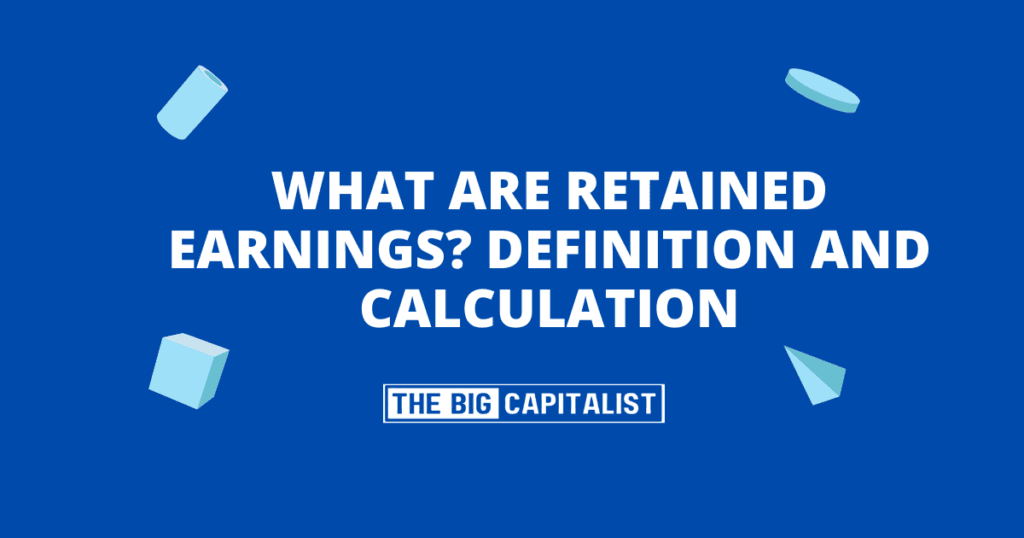When you look at a company’s financial statements, you’ll often see a line labeled “Retained Earnings.” Understanding how to calculate retained earnings is important as this figure tells you how much profit the business has chosen to keep (or “retain”) over time rather than distribute to shareholders as dividends. Essentially, retained earnings can act as a vital source of funding for future growth, debt repayment, or other important financial decisions.
In this article, we’ll break down what retained earnings are, how to calculate them, and why they matter for the long-term success of your business.
1. Understanding Retained Earnings
Retained earnings represent the cumulative net income a company holds onto after paying out any dividends to shareholders. A business may choose not to give out all its profits. Instead, it might reinvest some or all of those earnings back into its operations. These retained profits can then be used for:
- Expanding into new markets
- Purchasing equipment or assets
- Paying down existing debt
- Saving as a cushion for downturns or emergencies
Retained Earnings vs. Net Income
- Net Income: The total profit a business makes after subtracting all expenses and taxes within a specific period.
- Retained Earnings: The accumulated profits (from net income) that haven’t been paid out as dividends but are kept in the business to fund growth.
2. How to Calculate Retained Earnings
The calculation for retained earnings is relatively straightforward. You typically start with the previous period’s retained earnings balance, then add net income (or subtract a net loss) for the current period, and finally subtract any dividends paid out to shareholders.
Retained Earnings (End of Period)
= Retained Earnings (Start of Period)
+ Net Income
- Dividends Paid
Example Calculation
Let’s say a company begins the year with $500,000 in retained earnings.
During the year, it earns $200,000 in net income and decides to pay out $50,000 in dividends.
New Retained Earnings
= $500,000
+ $200,000
- $50,000
= $650,000
This company ends the year with $650,000 in retained earnings on its balance sheet.
3. Where You’ll Find Retained Earnings in Financial Statements
Retained earnings appear on the balance sheet under the shareholders’ equity (or owners’ equity) section. You may also see a separate statement of retained earnings (or statement of changes in equity), which outlines how retained earnings changed over the accounting period. Learning to calculate these retained earnings can improve your understanding of the company’s reserves.
4. Why Retained Earnings Matter
- Indicator of Company Growth
A consistently growing retained earnings balance often signals healthy, sustainable profit generation. It suggests the company is reinvesting profits wisely to expand operations, improve products, or drive innovation. - Financial Cushion
Retained earnings can act as a safety net. If revenue drops or unexpected costs come up, companies can use their retained earnings. This helps them avoid taking on debt and keeps things running smoothly. Always calculate retained earnings carefully to ensure a robust buffer. - Supports Future Investments
The company can use retained earnings to launch a new product line, buy equipment, or enter a new market. This way, it can get the funds it needs without increasing its debt. - Shareholder Confidence
High retained earnings may lead to lower dividend payouts now. However, shareholders often value a company that reinvests in itself. Strong retained earnings can contribute to long-term share price growth and overall business stability.
5. Common Ways Businesses Use Retained Earnings
- Expansion and Growth Initiatives
Many companies use retained earnings to open new locations, broaden their product range, or invest in research and development (R&D). - Debt Reduction
By paying down loans or other obligations, businesses can lower interest costs and free up cash flow for future projects. - Stock Buybacks
A company may buy back its own shares if it thinks the stock is undervalued. It might also do this to change its capital structure. - Unexpected Events or Emergencies
Having strong retained earnings can help you handle economic slowdowns or unexpected challenges. This way, you won’t need to rush for outside funding.
6. Potential Downsides and Considerations
- Over-Retaining Earnings: If a company hoards too much capital, shareholders may feel shortchanged by low or non-existent dividends. It’s a balancing act—companies should retain enough earnings for growth but also reward shareholders. The annual report should also clearly show how to calculate retained earnings for transparency.
- Inefficient Use of Funds: Investing retained earnings in weak or uncertain projects can waste valuable resources. These resources could be used for better opportunities.
- Tax Considerations: Depending on the jurisdiction, retaining earnings could have different tax implications compared to paying out dividends. Companies often consult tax advisors to choose the best strategy.
7. Key Takeaways for Business Owners and Investors
- For Business Owners: Aim to strike the right balance between paying dividends and retaining enough earnings to fund your company’s goals. Keep a close eye on how those retained earnings are used and whether they’re delivering a good return on investment (ROI). Always ensure you accurately calculate the retained earnings for better decision-making.
- For Investors: Reviewing a company’s retained earnings can provide insights into its financial health and long-term strategy. Look at how a business reinvests these funds—are they fueling growth, innovation, or debt reduction?
Conclusion
Retained earnings play a major role in a company’s long-term success. They’re more than just leftover profits; they’re the fuel that powers future growth and stability. By understanding how retained earnings are calculated, where to find them on financial statements, and how businesses use them, you’ll gain a deeper appreciation for the financial decisions that drive sustainable expansion.
Whether you’re an investor evaluating a company’s financial health or a business owner looking to manage your cash flow strategically, paying attention to retained earnings is a smart move. By using these funds wisely, you can help your organization grow. You can pay down debt, invest in new opportunities, or create a financial buffer. This will lead to steady growth and long-term profits.
Retained Earnings – FAQs
Q1: How can I tell if a company is using its retained earnings wisely?
A: Look at how the company reinvests those funds. Are they expanding, launching new products, or reducing debt? Check financial statements and company updates to see if retained earnings lead to real growth or stronger financial stability. If there’s little progress despite high retained earnings, it may signal inefficient use of funds.
Q2: Is it better for a company to pay dividends or keep retained earnings?
A: It depends on the company’s goals and financial health. If the business has strong growth opportunities, retaining earnings may be smarter than paying dividends. But if it’s not using retained funds effectively, shareholders might prefer dividends instead. The best companies find a balance that supports growth and keeps investors happy.
















